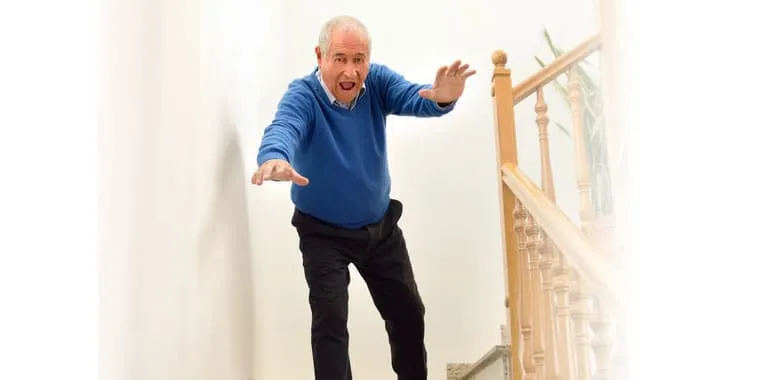Falls among the elderly are prevalent, dangerous, and can diminish their ability to lead an active and independent life. About one in three seniors above age 65, and nearly one in two seniors over age 80, will fall at least once this year, many times with disastrous consequences. Physical therapists can help prevent falls with evaluation and development of individualized treatment plans including exercises to improve strength, mobility, and balance.
Risk factors associated with falls:
- Conditions associated with aging
- Muscle weakness
- Difficulty with balance or walking
- Vision problems
- Pre-existing medical conditions that limit mobility, such as Parkinson disease, stroke, or diabetes
- Conditions that cause confusion (dementia, Alzheimer’s, etc…)
- Being on more than four medications at the same time
- Use of an assistive walking device
- Environmental hazards (e.g., throw rugs, pets)
- Difficulty completing activities of daily living
- Low blood pressure
Maintaining Physical Activity
Maintaining physical activity is critical in helping to prevent falls. Physical therapists recommend
activities of any fitness level, including gardening, line dancing, and yoga to help improve balance
and movement.
Test Your Balance
Balance may be improved with exercises that strengthen the ankle, knee, and hip muscles and
with exercises that improve the function of the vestibular (balance) system. A simple assessment
of your current balance can be done at home.
Do not attempt to do this test alone—make sure that you have someone next to you to
decrease the potential risk of falling.
Perform this test standing with a counter surface in front of you:
- Stand tall, wearing flat, closed shoes, with your arms folded across your chest. Keep your eyes open, focus on an object in front of you, raise one leg, bending the knee about 45 degrees, and start a stopwatch.
- Remain on one leg, stopping the watch immediately if you uncross your arms, tilt sideways more than 45 degrees, move the leg you are standing on, or touch the raised leg to the floor.
- Repeat this test with the other leg.
- Compare your performance to normal results for various ages:
– 20 to 59 years old (28 to 29 seconds)
– 60 to 69 years (27 seconds)
– 70 to 79 years (15 seconds)
– 80 and older (6 seconds)
How a Physical Therapist Can Help
Once a physical therapist has reviewed your medical history and completed a thorough
examination, he or she will design an individualized program of exercises and functional activities
for you. This program may focus on strength, flexibility, balance, coordination, and walking.
If necessary, the physical therapist will refer you to other medical professionals, such as an
ophthalmologist or neurologist.
Acknowledgment:
All contents © 2011, 2009 American Physical Therapy Association.
All rights reserved.


